Warszawa 2018-04-07
Mikhail Mil Mi-24 attack helicopter.
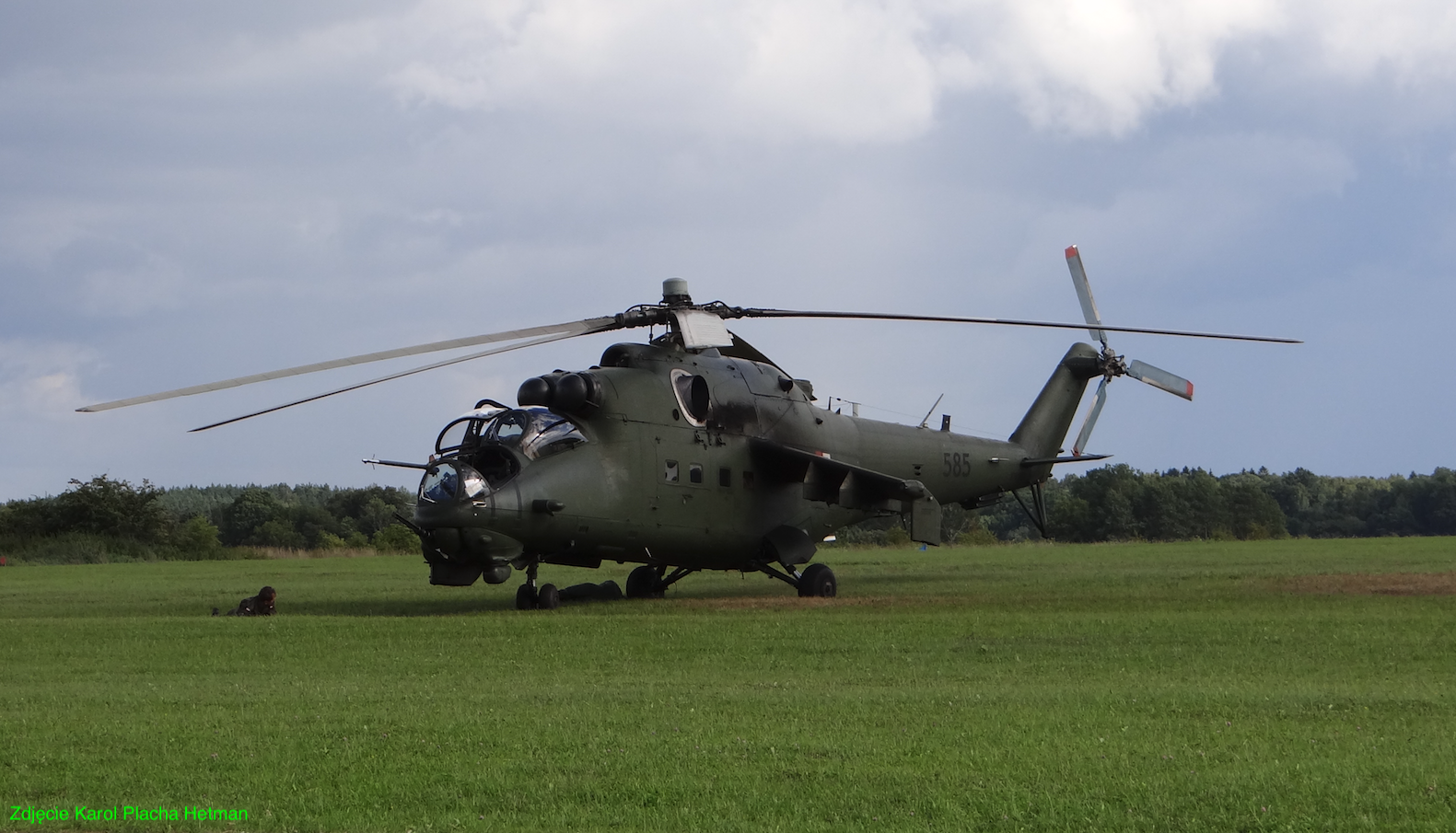
Mil Mi-24 Nb 585 helicopter in the painting used at the beginning of the 21st century.
Design of the Mi-24 helicopter.
Mil Mi-24 is a medium attack and transport helicopter, built in a classic layout with a twin-engine drive.
Main rotor.
The main rotor was adopted from the Mi-8 helicopter, but with a reduced diameter; Mi-8 diameter is 21.29 m, Mi-24 diameter is 17.00 m. Thanks to the smaller diameter of the main rotor, the blade tips have a lower speed and thus generate less noise. The rotor hub is made of high-strength steel. The blades were hinged, with swing, yaw and twist joints. Yaw joints with hydraulic dampers. The rectangular blades have a NACA 230 profile. The main, front girder is made of titanium. The trailing part is made of a laminate with a honeycomb filler. At the end of the shovel, a relief flap was installed. An electric anti-icing system was installed on the leading edge. The interior of the blades was filled with nitrogen under increased pressure. Blade damage is signaled by extending a special cap, which is checked when the helicopter is stationary. Each blade is mounted to the rotor head by means of two pins, on multi-grooves. The impeller rotates clockwise. The rotor is equipped with a brake.
Tail rotor.
Three-bladed tail rotor, also adapted from the Mi-8 helicopter. In versions A, B, C placed on the right side of the tail boom. On version D and onwards, on the left side. The propeller is made of steel, aluminum and laminates. Shovel runoff with honeycomb filler. There is an electric anti-icing system on the leading edge. The propeller rotates clockwise.
Drivetrain.
The transmission system is based on the final drive. The rotational motion from the free turbine, from both engines, is transferred to a double planetary gear, which reduces the revolutions, converting them into force. The main rotor shaft and the tail rotor drive shaft come out of the main gearbox. The tail rotor shaft system has two bevel gears.
Helicopter fuselage.
The fuselage of the helicopter is metal, semi-monocoque. Mainly duralumin was used. Constructed of frames, stringers and covering. The fuselage has five main frames that carry the greatest loads. Engine mounts, main transmission, helicopter landing gear, wings with armament beams are attached to them. Some sensitive places have been additionally reinforced with overlays made of titanium.
Crew cockpit.
Mi-24 D. The cockpit was placed in the front of the helicopter. There are two crew seats inside. The first seat is occupied by the weapons operator, and the rear one is occupied by the pilot. The rear seat is 0.30 m higher. The cockpit is generously glazed. The front windows are made of armor-piercing glass. In earlier versions, the crew consisted of three or even four pilots (first models and mock-ups). The cockpit is airtight, ventilated and heated or cooled. The entrance to the operator's cockpit is on the port side, the entrance to the pilot's cockpit is on the starboard side.
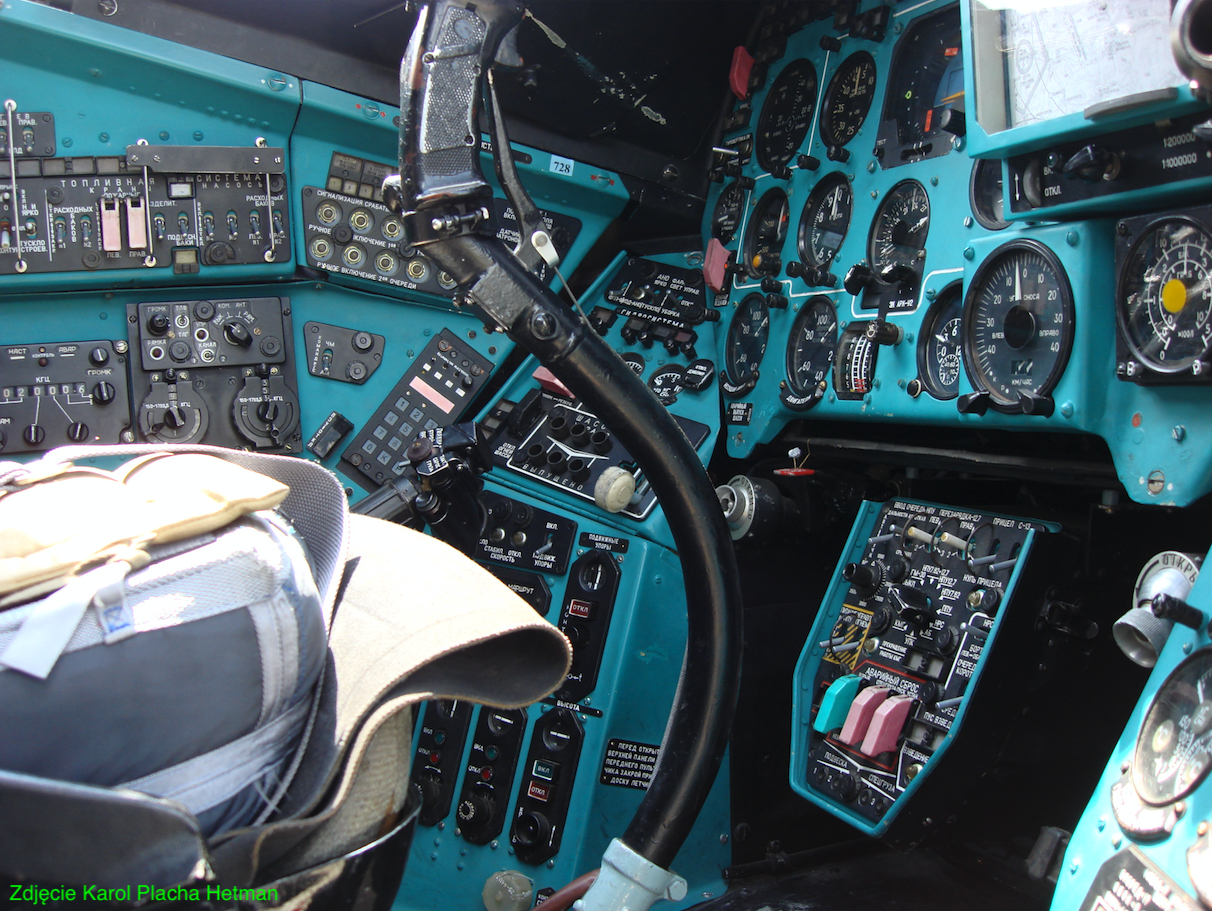
Helicopter cargo hold.
The cargo cabin allows you to take eight soldiers with full equipment or four wounded on stretchers. Access to the cabin is provided by doors located on both sides. The door is two-part, opened: the upper part up, the lower part down. The eight soldiers are seated on two benches, four by four, back to back. Thanks to this, they can fire through the open cabin door. Both the cargo cabin and the crew cockpit can be kept at a higher pressure than what is outside. This allows the helicopter to fly through contaminated zones.
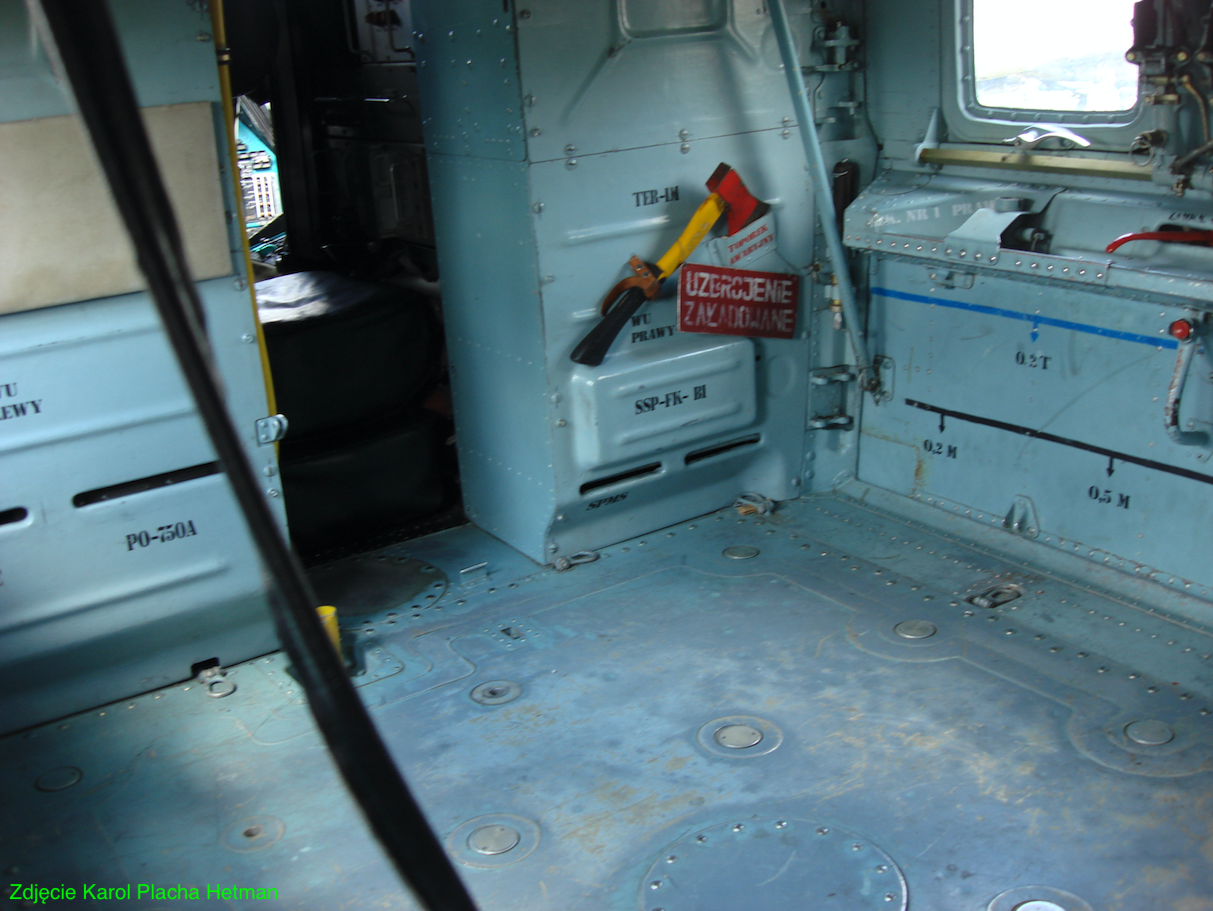
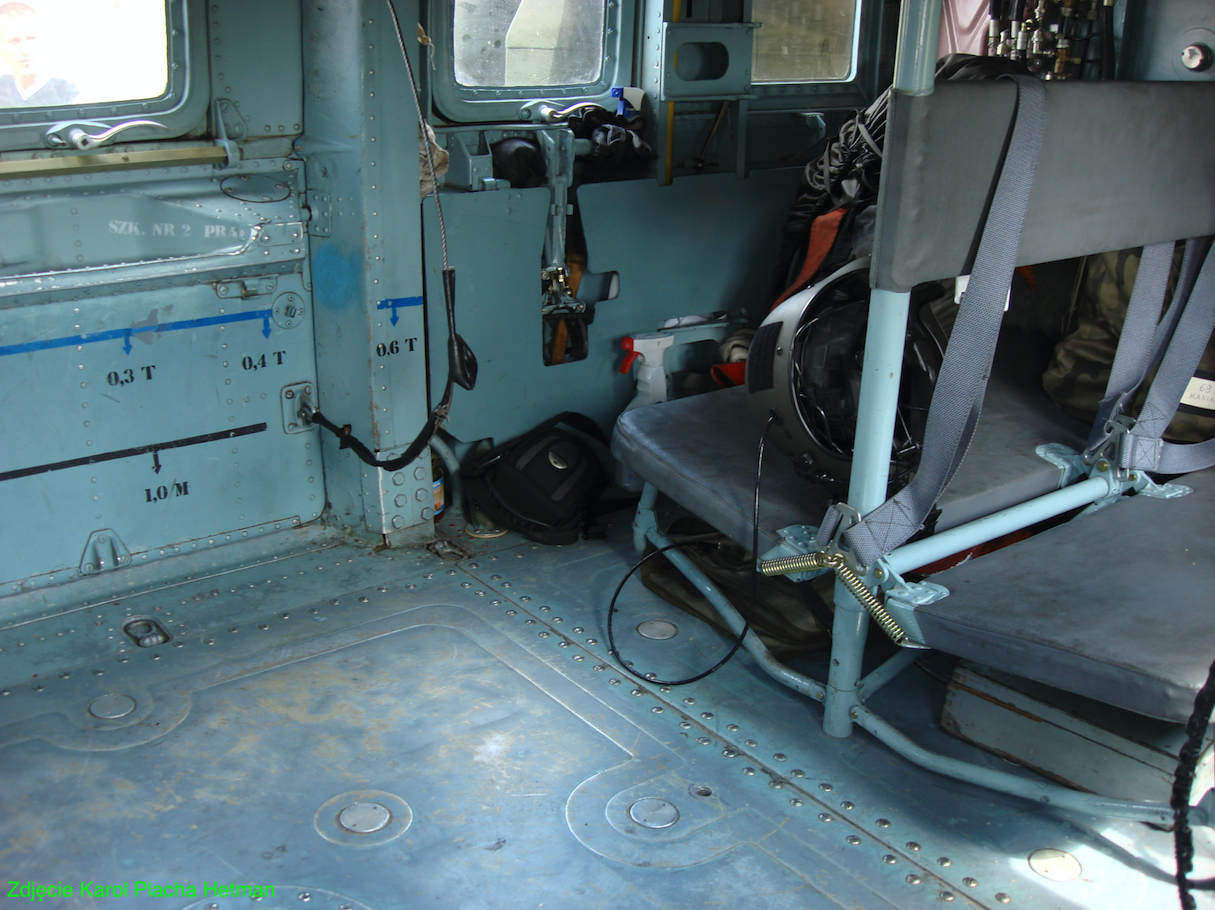
Auxiliary lobe.
The auxiliary wing is used to increase the range of the helicopter and to mount nodes with suspended armament under them. In high-speed flight, the wings relieve the main rotor by about 25%. (Specifically 22-28%, depending on speed and other conditions). The lobes have a negative rise of 16 degrees. They are wedged at an angle of 20 degrees. All-metal construction. Area 6.75 square meters. The spars of both wings are connected inside the helicopter, behind the cargo cabin. Under each wing are three pylons for armament. The height of individual nodes is such that the service of the armament is convenient. The Mi-24 B helicopter had straight wings, and only one node after each. The nodes were placed relatively high and handling was difficult.
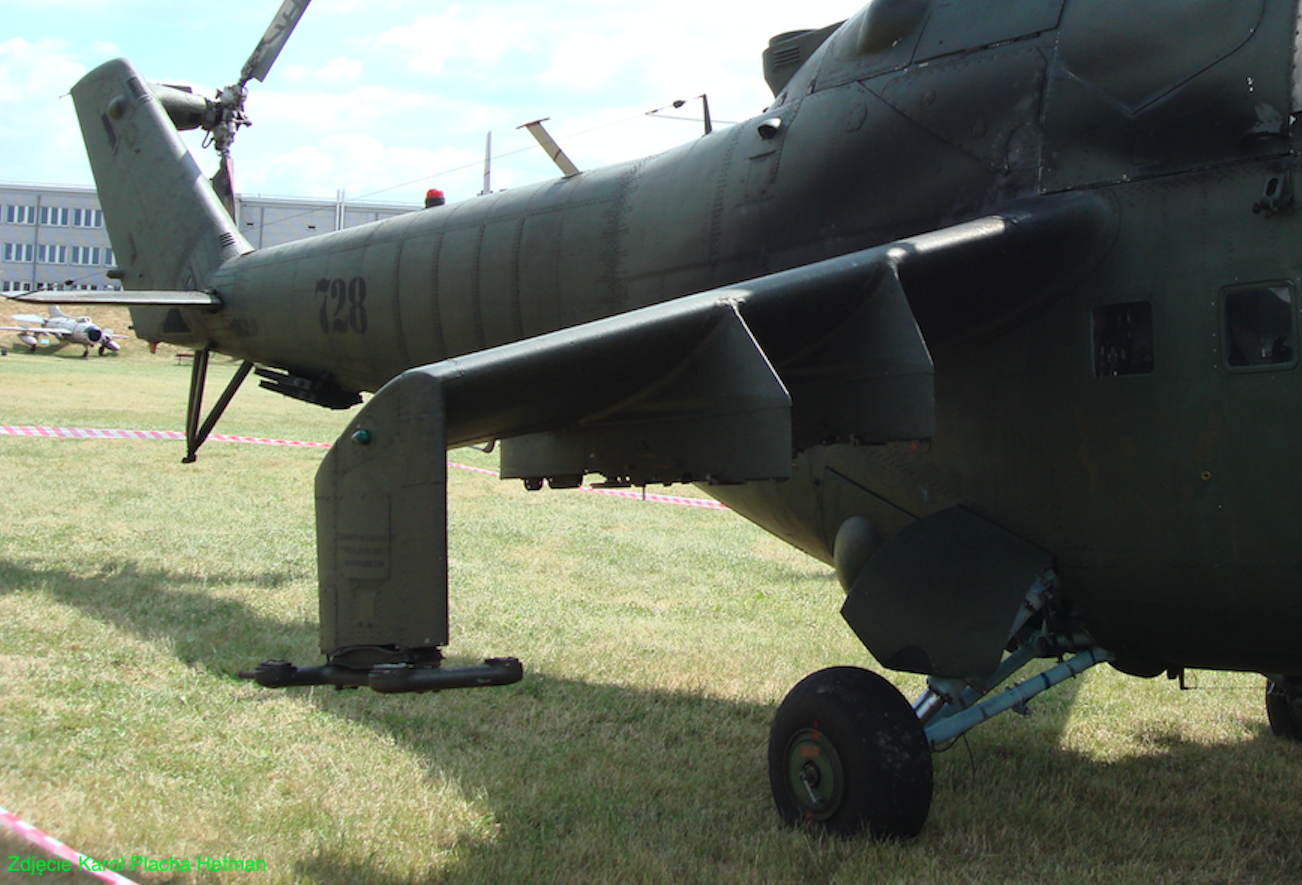
Fault.
The vertical tail is tilted to the right by 3 degrees. Horizontal tail with a trapezoidal contour, trimmed.
Chassis.
Aircraft-type landing gear with front support, fully retractable into the fuselage. Front assembly with two wheels on a common axle, retracted to the rear. The main landing gear with single wheels, retractable to the rear with a rotation of 90 degrees. Legs amortized by oil-air shock absorbers. Low pressure pneumatics. Adapted to operate from a ground (grassy) surface. The tail boom is protected by a bumper suspended on a structure consisting of three tubes.
Drive unit.
The drive unit consists of two turbine engines with the so-called free turbine. Designed by Sergei Piotrowicz Izotov. Initially, TW2-117 A engines were used, with a maximum power of 2 x 1,267 kW, starting power of 2 x 1,118 kW, constant power of 2 x 895 kW. A little later, TW3-117 engines were used, with a starting power of 2 x 1,620 kW, with a nominal power of 2 x 1,400 kW. TW2-117 A: length 2.835 m, width 0.547 m, height 0.765 m. Weight 330 kg.
Axial motor compressor, 10 stages. First 3-stage adjustable. Adjustable inlet vanes. Compressor static pressure is 6.6:1. Annular combustion chamber, equipped with 8 injectors and two igniters. 2-stage compressor turbine. Free turbine also 2-stage. Exhaust outlet tilted 60 degrees to the left or right. The engines have an anti-pump system. The motors are interchangeable. The air intakes to the engines are equipped with anti-icing systems. They can be fitted with guards to prevent foreign bodies from entering the motors. An air intake is placed between the engines to cool the engines and final drive.
The Mi-24 helicopter has an auxiliary power unit (APU). Versions D and E have the option of installing centrifugal anti-dust filters on the inlets. On the other hand, devices that reduce the thermal footprint can be installed at the flue gas outlets. The principle of operation consists in supplying an additional portion of cold, external air to the flue gas stream, and such a mixture is directed upwards so that the rotor dissipates the warm trail completely. Fuel Tanks: The main fuel tank is located behind the cargo cab. The others are under the cargo cabin floor. It is possible to hang additional external fuel tanks.
Equipment.
The electrical installation is doubled, powered by batteries and three generators. The helicopter has KF Karat-M24 and VHF R-860 or R-863 communication radios. WUAP-1 automatic pilot. Radiolocator. ARK-15 M and ARK-2 U radio compass with R-852 receiver. Classic compass KI-13 K. Automatic navigation system with radio-compass. Radio altimeter RW-5. DISS-15 D Doppler radar speed and drift angle meter. Ł-166 W-1 AE microwave radiator interfering with the operation of enemy missile guidance systems. MS-61 on-board tape recorder. Chromium-Nickel recognition system. Basic pilot instruments.
Armament.
The armament consists of a USPU-24 hydraulically powered turret with a 4-barrel 12.7 mm YaKB-12.7 machine gun. The new designation of the rifles is 9-A-624. It is possible to fire at an angle of 60 degrees horizontally, 20 degrees upwards and 40 degrees downwards. The ammunition supply is 1,470 rounds. Rate of fire 4,000 - 5,000 shots/min. The YaKB-12.7 MG is controlled by the KPS-53AW targeting station located in the operator's cabin, in front of the windshield. Opening fire can be started with the left or right hand, because there are two independent triggers. In addition, the station is equipped with a miniature PAU-457-2M film camera, used as a photo-control device. As a result of the modernization, the control of the four-barreled rifle can be carried out using the ATGM guidance station. Suspended armament: Mi-24 D carried four ATGM 9M-17P Skorpion guided missiles, range 3,000 m. Mi-24 W carried eight 9K114 Szturm-W missiles. Missile range 5,000 m. Unguided missiles; UB-32A-24 pods with 57 mm S-5 missiles. Cannon or machine gun pods. Bombs weighing from 50 kg to 500 kg. Additionally, the helicopter can be equipped with flare ejectors (thermal traps). They are mounted in a special tray located under the rear part of the tail boom. The helicopter may also have radio-guided missile jamming equipment.
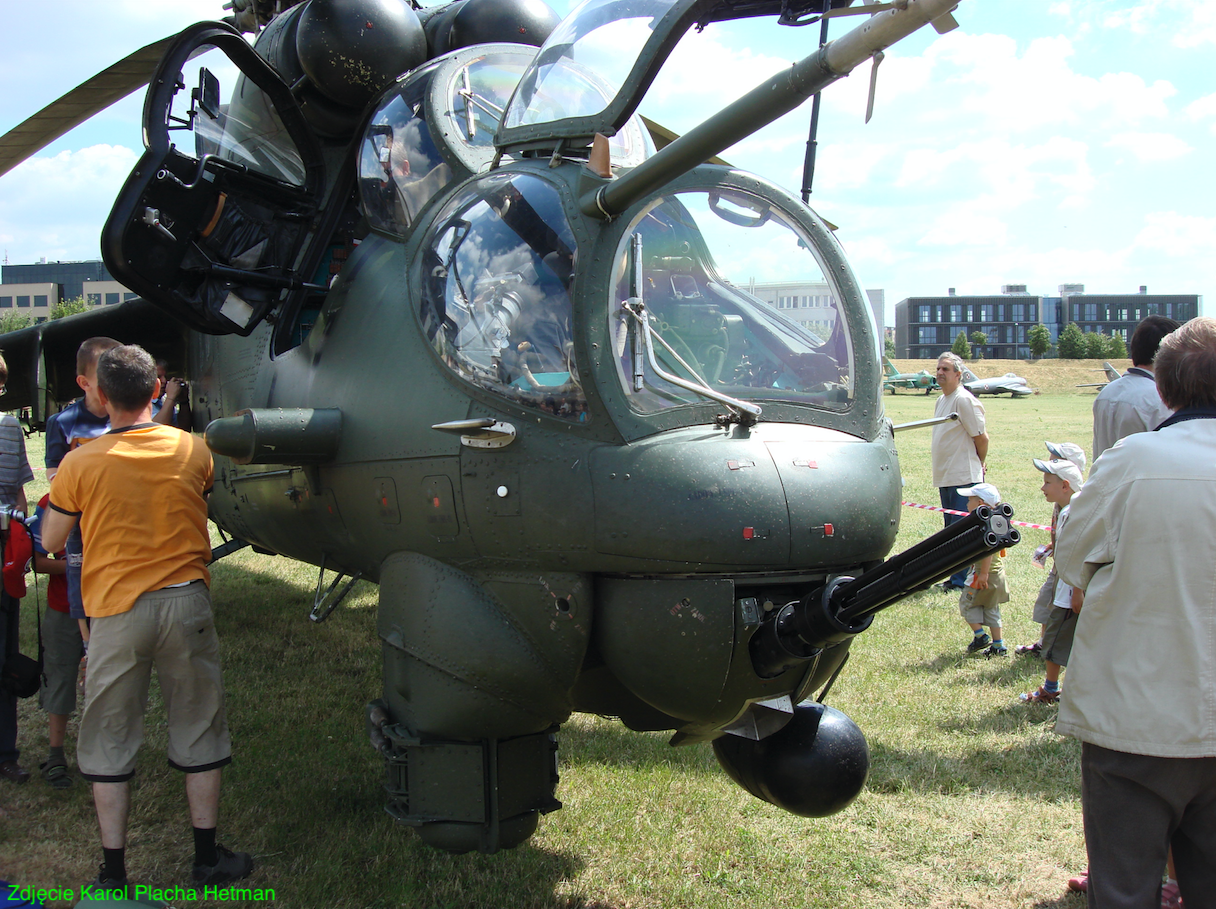
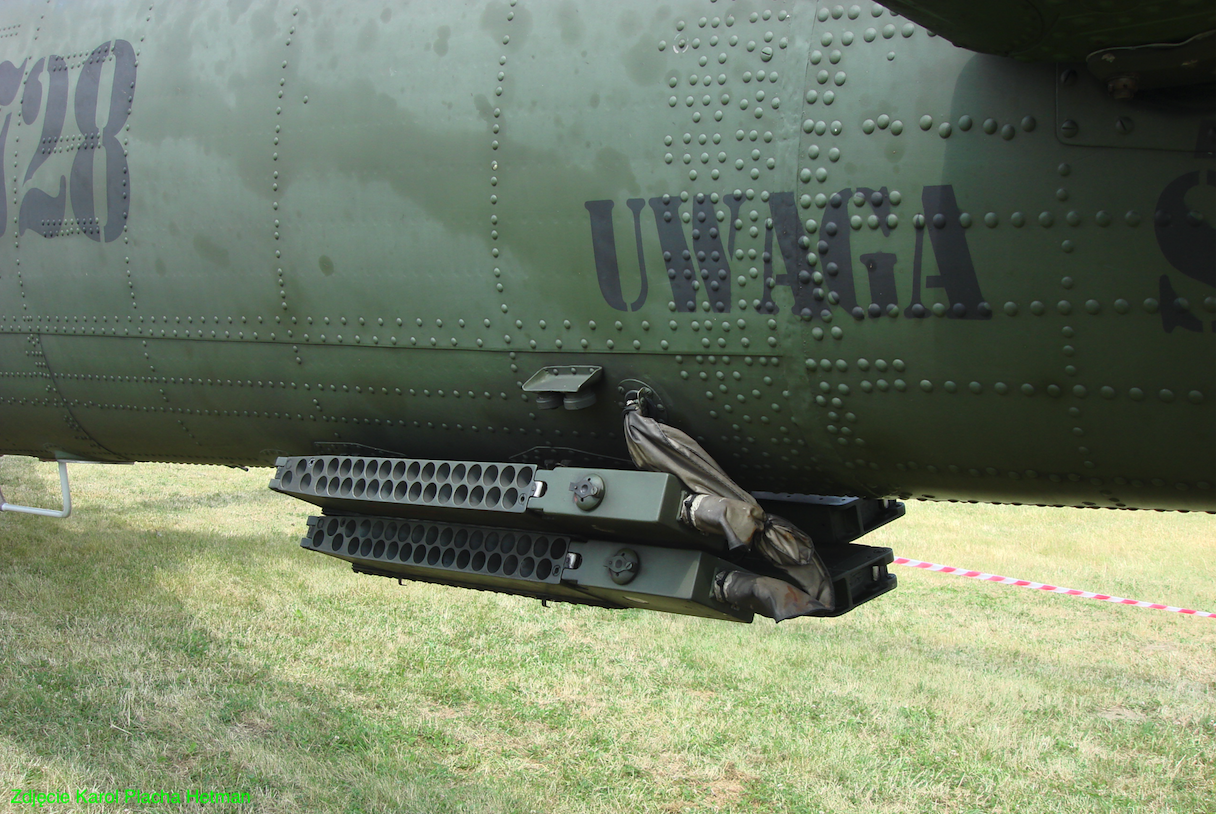
Mil Mi-24 T-T data:
Length 16.80 m. Height 5.70 m. Rotor diameter 17.00 m. Curb weight 8,400 kg. Total weight 11,000 kg. Maximum weight 11,500 kg. Load weight 2,600 kg. Top speed 310 km/h. Range 750 km. Operating radius 350 km. Operating ceiling 4,500 m.
Written by Karol Placha Hetman
